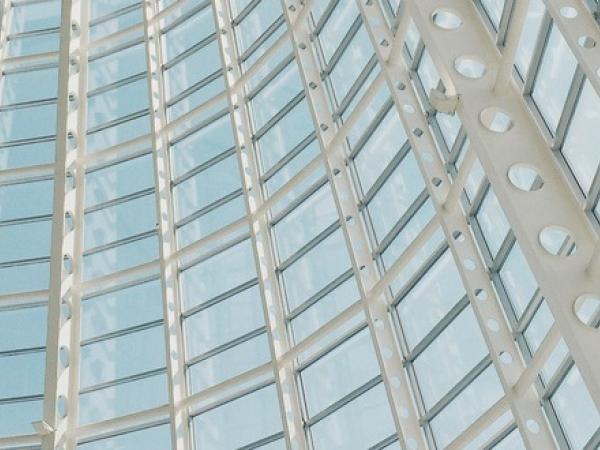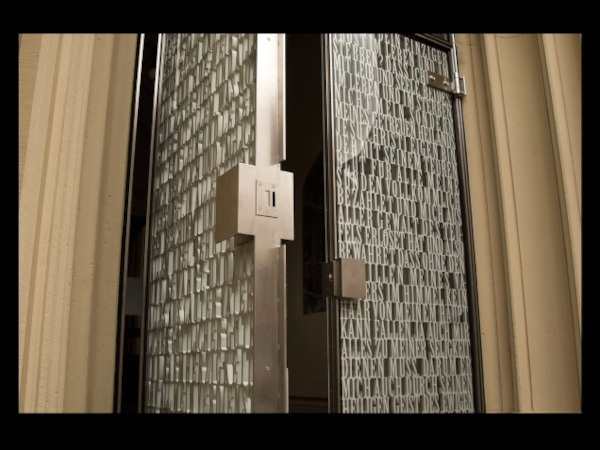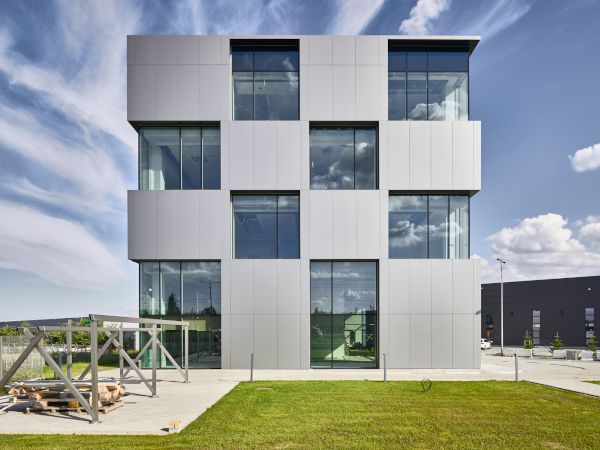
Date: 6 June 2016
For a building to be considered “day lit”, the primary source of daytime illumination must be natural light.
The practical purposes of daylighting
There are a few practical reasons for designers to embrace the practice of designing for optimal use of natural light. This includes lessened artificial energy demands, resulting in lower operating costs; increased revenue, particularly in retail applications; and increased safety in public places. Studies show that using natural light in public and transportation buildings helps reduce possible threats to occupants and users. Perhaps one of the most practical reasons, however, is the effect that natural light has on the humans who occupy the building; it is becoming increasingly apparent that humans are at their healthiest and most productive when they have adequate access to natural light.
Supporting the cycle
When it comes to the human element, the primary purpose of daylighting is to help support the circadian cycle; the cycle provided by the natural light and dark throughout the course of a day. Of course, the Earth’s natural lighting cycle can be unpredictable: solar position and weather conditions play a part in how much and what type of light/dark is provided, and the cycle is also dependent upon location –northern latitudes will not receive the same exposure to light as those living in southern ones, and vice versa re: dark. Yet, exposure to both light and dark in a natural, cyclical manner is imperative to human health.
Translating this need to architectural design, daylighting can be used as a way to mimic/take advantage of the natural cycle thus achieving multiple human health benefits:
- Controlling body (circadian) rhythms, changes in core body temperature, and in hormone secretion. When we are in-sync with the natural world’s lighting we are healthier and we sleep better.
- Positively affecting health and mood. Lack of light can contribute to depressive disorders,2 and a variety of studies have shown that people with access to natural light and window views heal and recover faster from illness.3
- Enhancing learning, productivity, and brain performance. Research suggests that employees and students who work/learn in buildings with good levels of natural lighting perform better, produce more, and have better attendance records.4
Doing it right
Of course, there are also negative effects that can result from improper installation of windows and daylighting structures. Glare, brightness levels, and thermal comfort must all be taken into account when designing view windows and daylighting apertures.
Passive Solar Design
Despite our understanding of the human need for natural light, for many building owners, the primary reasons to consider daylighting remains the reduction of energy load. Passive solar design does this by combining daylighting and passive solar heating methods to aid in heating, cooling and lighting a building. South facing apertures collect solar energy, which is stored in materials with a high heat capacity. Natural convection and radiation is used to distribute the energy into interior spaces.5 North-facing apertures provide additional natural light for illumination. To eliminate thermal comfort issues, sun spaces can be designed to close off from the rest of the building, and filters and other design features can be used to keep the building at a comfortable temperature. Apertures can also be designed to provide fresh air as/when weather conditions allow.6
Types of daylight
There are two types of natural light used in buildings:
Direct light – As the name implies, direct light passes through windows, doors and other apertures without hindrance or filtering. Because it passes through as a straight beam, direct lighting tends to provide a strong light at point of entry that lessens as you move further away. This results in shadows forming in some places whilst areas directly in the light’s path suffer from brightness, glare and thermal discomfort when the sun is too strong. So, while direct lighting can be useful in certain situations, to achieve good ambient lighting (especially in larger spaces), a different way of distributing daylight is required.
Diffused light – With diffused lighting, beams of direct light are broken and dispersed as they pass through the aperture, providing a more even distribution of light across a space. As a result, the lighting is softer and wider spread: eliminating glare, reducing the risk of thermal discomfort, and removing shadows.
Types of glazing for windows and apertures
There are a variety of glass options to consider when designing for daylighting purposes. This includes: clear, modified composition (low iron [extra clear], body tinted), modified surface (fritting, applied film), coated, laminated, patterned, and mirrored. There are also non-glass products like layered polycarbonate, PVC and glass reinforced polyester (GRP) that work well for daylighting purposes.
Other reasons for incorporating natural light
In addition to illumination and creating solar energy, natural light can be used in a building for other purposes. This includes:
Perception – natural light can be used to alter a person’s perception of space and shapes to create a pleasing illusion.
Focus – natural light can be used to direct attention towards or away from certain spatial elements.7
Daylighting and thermal comfort
One of the more common arguments against daylighting is concern about thermal comfort; strong natural light lets in too much heat. While this was once a valid point, today’s daylighting methods are far better at addressing that issue. Modern systems use filters to help retain temperature balance – stopping excessive heat from coming in during warmer times and preventing it from escaping during colder ones. 8
Determining lighting levels
Although BS 8206-2:2008 provides a measurement for determining appropriate lighting levels, research since its publication shows that the issue is a bit more complex. For comfortable, fit-for-purpose lighting levels, daylighting factors should be assessed holistically: Where is the building located? What is the orientation of the front of the building? What is the interior space layout? What is the space being used for? There are also aesthetics, visual comfort levels (avoiding dark patches and glare), seasonal, weather and daytime light changes, and energy implications to consider.
Size and location – daylighting apertures versus view windows
When designing for passive lighting, daylighting apertures should be considered separately from view windows. For optimal use of natural light, daylighting apertures need to be located higher up than viewing windows. Size and glazing requirements are also different, with apertures needing to be specified to provide the space with a sufficient amount of diffused light. View windows, on the other hand, should be clear and located at a comfortable height for viewing from a sitting or standing position. Shades, reflective surfaces, light shelves, and tinting can all be used in correlation to apertures and view windows to eliminate glare and better redirect and distribute diffused light.
Because higher apertures tend to provide the best natural illumination, designers often turn to roof lighting. There are a few different styles of roof lighting that can be used. This includes: clerestory, skylight, sawtooth, and monitor. Each style brings light into a space differently, depending upon the time of day and year. Environmental and maintenance factors should be considered when determining what type of roof lighting is selected.9
Design considerations
Whatever style of daylighting aperture is selected, when designing for daylighting there are a few things to consider. This includes:
- Balancing needs. Because glazed openings create a thermal weak point, how much heat will be lost in cold months and/or admitted during warm ones needs to be assessed, and a balance needs to be reached between meeting lighting needs and thermal ones.
- UV protection/ filtering. Some materials (paper, artwork, textiles, etc.) fade and/ or deteriorate under certain light conditions, so buildings like exhibition halls, libraries, museums, and art galleries need to take special care when determining daylighting levels and UV filtering.
- Minimising noise pollution. For buildings located in noisy areas or structures that produce a lot of noise internally, sound penetration levels must be factored in.
- Wind exposure. As daylighting apertures tend to be located on the roof and/or higher up on a structure, things like maximum wind pressure and snow fall must be assessed.
- Atmospheric pollution. In high pollution areas, horizontal and sloped apertures can quickly collect dirt and grime, reducing their functionality. Because of this, these styles of daylighting apertures may require extra glazing and additional maintenance. The costs and effort of providing those things needs to be assessed for practicality.
- Safety and security. Considerations need to be made for both accidents and deliberate attacks. Each year, seven people are killed on average from falling through a fragile roof or roof light. Others suffer from permanent injury. Vertical glass located at walking level needs to be able to withstand the impact of someone accidentally running or walking into it. There is also a level of resistance to projectiles (stones, balls) that is necessary. As for security, large panes of glass may draw vandals, and locking system options should be weighed according to need. For facilities that have a higher level of safety and/or security demands, adding a layer of shatter proofing and/or blast proofing may be needed. Depending upon the level of security required, the end result may be a compromise between security and ventilation.
- Frames/ support structures. The amount of light let in and its distribution is influenced by the framing material selected, so framing needs to be taken into account when determining expected performance.
Conclusion
A daylighting strategy is an important part of the design of any building that is to be used or occupied by living beings. Research shows that, with good exposure to natural light, workers and students are happier, healthier and better performers. In healthcare buildings, natural light has also been shown to aid in patients’ healing and recovery process. Daylighting also reduces a building’s energy load and, in some cases, daylighting structures can actually produce energy themselves.
To achieve the best results, daylighting should be part of the earliest stages of planning and design. The best approach is a holistic one, factoring in: building location and orientation, interior layout and purpose, aesthetics, visual and thermal comfort levels, seasonal, weather and daytime light changes, and energy implications. Other factors to consider include security and safety, noise pollution and weather events, and cost and ease of maintenance.
Related reading
NBS/IHS’s Construction Information Service (CIS) offers a good range of documentation that addresses daylighting in more detail. In addition to other cited sources, the following documentation found in CIS was used:
BSI: BS 8206-2:2008, Lighting for buildings. Code of practice for daylighting
CIBSE: SLL Lighting Guide 10: Daylighting – a guide for designers
NARM: Technical document NTD01.2, An introduction to natural daylight design through rooflighting
This article has been edited and repurposed from “Daylighting: Embracing the past to benefit the future”, written for the Construction Information Service.
References
1 www.archlighting.com/technology/the-benefits-of-natural-light_o
2 Conti, L. (2008) How light deprivation causes depression.
3 CPD 29 Specifying Glass Roofs and Skylights. Building Magazine, 27 November Building digital edition.
4 NARM technical documents, NTD01.2 (2014) Benefits of natural daylight in the built environment
5 Passive solar heating, whole building design guide (2005)
6 Passive solar heating & daylighting
7 Light as an architectural element (2013), a presentation by Atul Pathak
8 Team, B. (2013) Daylighting experts with engineered efficiency
9 Apertures for Daylighting (no date), Sustainability Workshop, Autodesk
 600450
600450













Add new comment